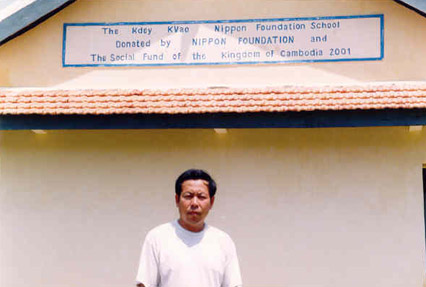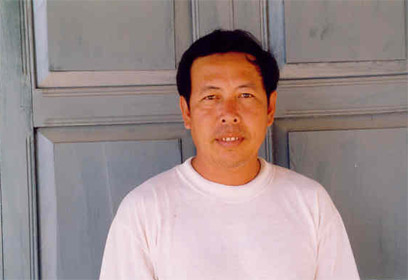The Cambodia Rural School Project
The Kdey Krav Nippon
Foundation School

Mr. Thho Bunleang is the school director of the Kdey Krav Nippon Foundation School.
He is forty-three years old.
I’m married and have five children. Two of my children are studying in the second and fifth grade at the new concrete school. My wife is a farmer, and our house is about 1,5 km away from this school. I usually ride my motorcycle to school, but when it rains, I walk.
For a long time we did not have either a school or a pagoda in Kdey Krav village. In 1981, the community constructed a school with two rooms made of wood and bamboo covered by a thatched roof. I became a teacher when the school was built. I was appointed a school principal in 1985 by the Department of Education. The former school was close to the river, and the location was not appropriate for a concrete building. I managed to get hold of another piece of land where the school could be constructed. I held a flower ceremony to raise money.* The new land is 8,300 m².
*[a monthly Buddhist fund-raising ceremony, held at a pagoda. The money collected is usually spent within the pagoda, or on projects deemed important in the village around the pagoda].
I like this building very much. It looks nice, strong and safe for our children. If we compare its classrooms with those of the old wooden building, the new school has more comfortable rooms that keep out the noise of other classrooms. Since the school was built, the number of student has increased.
I encourage the children to study hard. I always try to explain to the teachers that they should follow the rules of pedagogy and use many materials when they teach. The school awards gifts to the three top students in each grade at the end of the year as an incentive for them to study hard. Those gifts are notebooks, pens and pencils that are donated by the community and the wealthy people of this village.
There are 2,355 people living in the three villages that send children to this school.
On behalf of the villagers and myself, I want to thank the donor very much for having provided us with a nice school, and we wish that the donor would have good luck forever.


